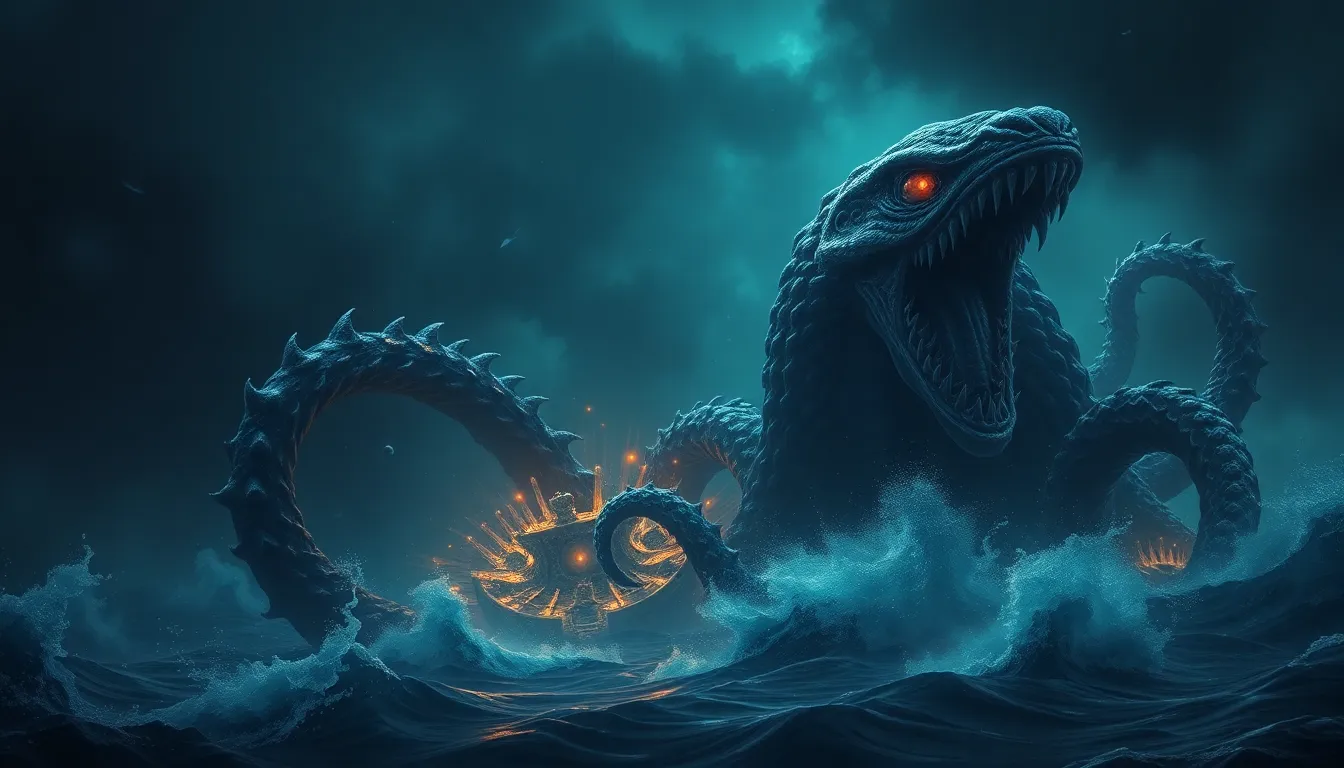The Mythical Water Horse: Exploring the Kelpie and Other Shapeshifting Creatures
I. Introduction
The Kelpie is a mythical water horse from Scottish folklore, known for its shape-shifting abilities and its haunting presence near bodies of water. These creatures hold significant cultural importance, representing both the beauty and danger of nature. In this article, we will delve into the fascinating world of Kelpies and examine their counterparts in global mythology, exploring the rich tapestry of shapeshifting creatures.
II. The Origins of the Kelpie
The origins of the Kelpie can be traced back to ancient Scottish folklore, where it is often depicted as a malevolent spirit inhabiting rivers and lakes. Historically, Kelpies were associated with tragic tales, wherein they would lure unsuspecting victims to watery graves.
Characteristics of the Kelpie include:
- Ability to transform from a magnificent horse into a beautiful human.
- Often depicted with a wet, disheveled mane and a dark, glistening coat.
- Known to entice travelers with its beauty, only to trap them once they approached.
In Celtic culture, the water horse symbolizes the unpredictable nature of water—both nurturing and life-giving, yet also destructive and deadly. The Kelpie embodies this duality, serving as a reminder of the respect that must be afforded to natural elements.
III. Physical and Mythical Attributes of Kelpies
The Kelpie is renowned for its striking appearance, which can vary based on the story being told. In its horse form, it is a majestic creature, while its human form is often portrayed as an alluring figure with a haunting beauty.
Some of the mystical powers attributed to Kelpies include:
- Shape-shifting: The ability to transition seamlessly between horse and human forms.
- Water manipulation: Many legends depict Kelpies as controlling the waters they inhabit.
- Guardianship: Kelpies are often seen as protectors of their aquatic domains, ensuring that only the worthy may pass.
These attributes highlight the Kelpie’s role as both a seducer and a guardian, reflecting the complexities of nature itself.
IV. Kelpies in Literature and Art
Kelpies have made significant appearances in Scottish literature, poetry, and folklore, often serving as cautionary tales about the perils of temptation and the unknown. Notable representations can be found in works by authors such as:
- Sir Walter Scott, who includes Kelpies in his narrative poems.
- Robert Burns, who references these creatures in his poetry.
In the visual arts, Kelpies have inspired a range of artistic expressions, from traditional paintings to modern sculptures. They often embody themes of mystery and allure, captivating audiences with their enigmatic nature. Comparatively, Kelpies share similarities with other mythical creatures across cultures, such as:
- Mermaids: Known for their enchanting beauty and perilous nature.
- Chupacabra: A creature that also embodies the fear of the unknown.
V. Other Shapeshifting Creatures in Mythology
Beyond the Kelpie, many cultures feature shapeshifting creatures that mirror the Kelpie’s themes of transformation and duality. Some notable examples include:
- Selkies: Mythical beings in Scottish and Irish folklore that can transform from seals to humans.
- Nuckelavee: A horse-like demon from Orcadian mythology, representing the chaos and terror of the sea.
These creatures are not only significant in their respective cultures but also reflect universal themes such as:
- The interplay between humanity and nature.
- The fear of the unfamiliar.
- The allure of the unknown.
VI. The Kelpie in Popular Culture
In contemporary society, Kelpies have found a place in various forms of media, including films, literature, and video games. Their portrayal has evolved, reflecting changing cultural attitudes towards myth and folklore.
Some modern adaptations include:
- Films that draw on the Kelpie myth for narrative depth, often depicting them as complex characters.
- Literary works that reinterpret Kelpies within new contexts, emphasizing themes of identity and transformation.
- Video games that feature Kelpies as mystical creatures, offering players a chance to interact with folklore.
The impact of Kelpies on contemporary storytelling demonstrates their lasting relevance and adaptability in modern narratives.
VII. The Psychological and Cultural Significance of Water Horses
The fascination and fear surrounding water creatures like Kelpies can be traced back to deep-seated psychological themes. They embody the dual nature of water: both life-sustaining and perilous. The Kelpie serves as a metaphor for:
- The danger inherent in natural beauty.
- The unpredictability of emotions and desires.
- The allure of the unknown, which can lead to both growth and destruction.
Furthermore, Kelpies play a role in shaping cultural identity, symbolizing the relationship between humans and the natural world. Their stories often reflect broader societal values and fears.
VIII. Conclusion
In summary, the Kelpie and other shapeshifting creatures represent a rich tapestry of myth and folklore that continues to captivate our imaginations. Through their stories, we explore fundamental themes of nature, identity, and the human experience. The enduring legacy of Kelpies invites us to reflect on our relationship with the natural world and encourages further exploration of mythical beings across various cultures.



